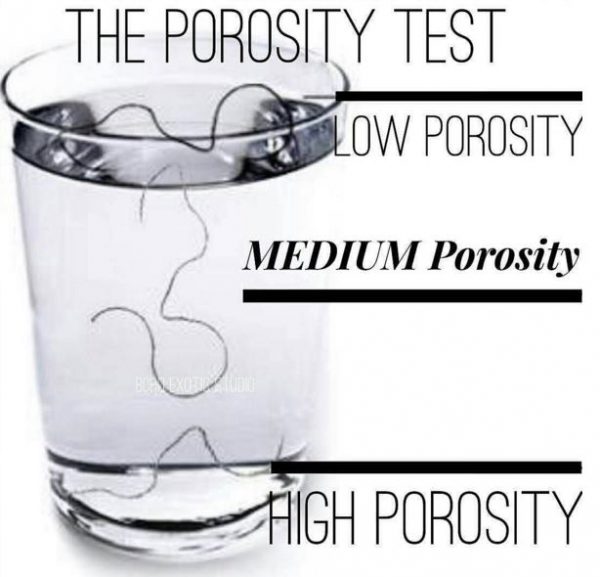I kept hearing about the term ‘hair porosity’ and had no clue what it meant, even after having it explained to me 🤷🏾♀️. Now I know that hair porosity basically refers to your hair’s ability to absorb and retain moisture, or simply how easily moisture can penetrate your hair.
So, what’s the difference between low vs high porosity hair?
Well, the structure of the outer layer of your hair, the cuticle, determines the porosity of your hair. So, if your cuticle layer is tightly bound, you have low porosity hair, this type of hair has a harder time absorbing moisture, but once it has absorbed it, it doesn’t let go of it that easily. On the contrary, the cuticle layer of high porosity hair has gaps and holes which makes it easier for moisture to be absorbed, but also easier for it to leave the hair.

But, how do you know what type of porosity hair you have? These 3 tests can help you find out:
- The float test: Put some clean strands of your hair (e.g. hair that has been shed from brushing) in a bowl of water, if your hair floats you have low porosity hair, if it sinks slowly you have medium porosity hair and if it sinks fast then you have high porosity hair. It’s important that you have no product in the hair as that can alter the results.
- The spray bottle test: Spray a small section of your hair with water and watch how your hair reacts. If the water just sits on your hair, or takes long to absorb, you have low porosity hair. But if your hair absorbs the water quickly, you have high porosity hair.
- The stretch test: Take a few strands of your hair and slide your fingers from the tip towards your scalp, if it feels smooth, you have low porosity hair, but if you feel some bumps or if it feels dry or breaks then you have high porosity hair.
Now, what do you do with this information?
For low porosity hair, use products that attracts moisture, like honey or glycerin, as well as moisture rich products like shea butter, jojoba oil, coconut oil. Apply these on damp but not drenched hair. Also using heat in the form of a hooded dryer, steamer or warm towel will help the hair better absorb products. And try avoiding products with too much oil as these acts as sealants for your cuticle.
For high porosity hair, products with more oils and thicker butters will serve as a protective layer and seal the cuticle. And to further seal and smooth the cuticles, rinse your hair with cold water, and avoid or use minimal heat as it keeps the cuticles raised. So, when you dry your hair, try let it air dry.
What’s your porosity type and have you found what works best for you? Comment below 👇🏾

